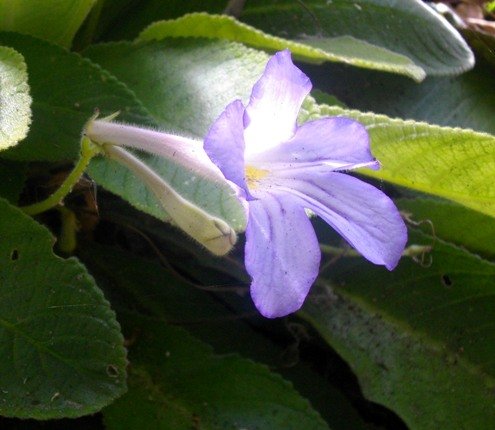Streptocarpus formosus bud and flower

Author: Ivan Lätti
Photographer: Thabo Maphisa
In this Streptocarpus formosus flower the characteristic dark blue veins along the lower petal lobes are visible, running some distance from the throat before they fade. The yellow nectar guide marking is also present. Hairiness is present on the outer surface of the corolla tubes, the narrowly pointed sepals as well as upon the flower’s petiole.
Under the corolla a curious thin, stalk-like protrusion can be seen above the leaf that may be a petiolode or rooting stem. This is a phyllomorphic structure, a meristem of the vegetative body found in some Streptocarpus plants and other members of their family, the Gesneriaceae.
Meristem tissue found at stem and root tips and in the cambium differentiate into specialised cells as a plant grows. In a meristem they haven’t yet differentiated, their options still open like for all stem cells.
The Streptocarpus genus is special in producing these unusual growths: leaves form successively in the rosulate (leaf rosette forming) species of Streptocarpus from the “groove meristem” situated on the petiolode (Nishii and Toshiyuki Nagata (2007): Developmental analysis of the phyllomorphic formation in the rosulate species of Streptocarpus rexii (Gesneriaceae). Plant Systematics and Evolution 265(3), pp. 135-145; Pooley, 1998).

